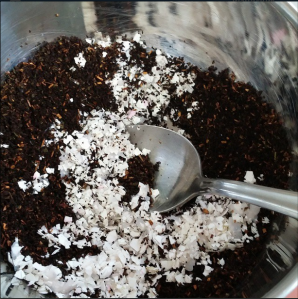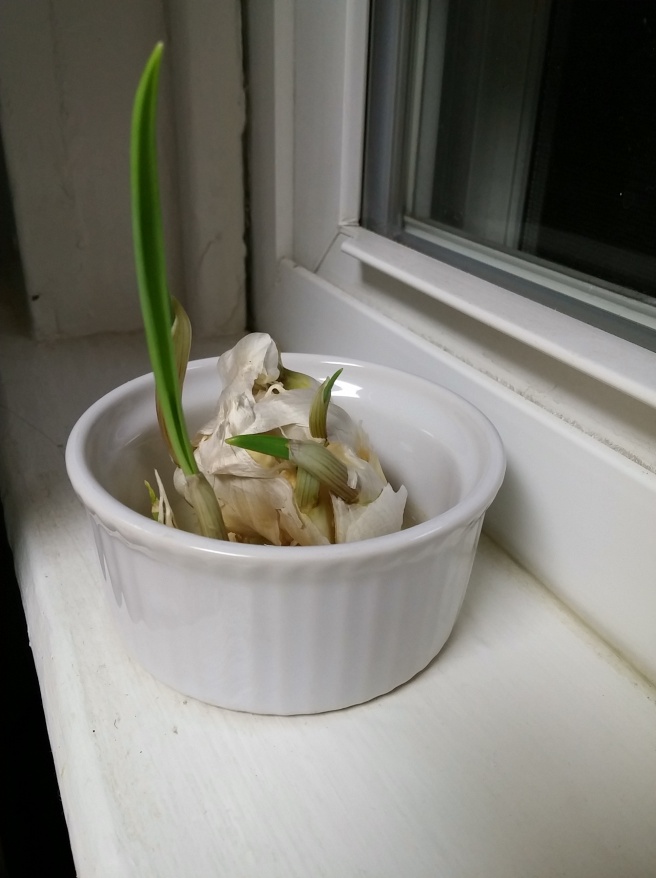Even though my little blog is in the middle of a gardening series, I’d like to take a side step for a moment and continue down this financial rabbit hole. To all my gardening readers, I promise I have really great, green and dirt-under-your-fingernails posts lined up!! As a matter of fact, what really got me started talking about money is how I intend to use my up-coming, first-ever vegetable garden this spring to help decrease my grocery bill. And as I will be composting, I’ll be saving money on all the waste management products (like trash bags!) we use as well! AND it is tax season so if there is a time to talk about money, it better be now…
In my first financial article I listed 20 ways this stay at home mama saves and thrifts! Right now I want to spend time talking about number 14 on that list:
Make paying off debt your number one priority.
Thankfully, Keith and I have always believed in staying as debt free as possible and we’ve organized our lives to maintain that value. We’ve only bought used cars so we’ve never had a car payment. We chose apartments that were at or below our budget which came with most of the utilities included in the rent. Our credit cards have never come anywhere near the credit line and are always paid off (in full!) by the time they are due. Also, when we rack up rewards points on our cards, we almost always use that free money to pay off the credit bill itself. Literally, the only thing we have ever accrued interest on are our student loans… and it absolutely kills me!
I HATE paying into my student loans. I HATE that once Keith finally! graduated and started earning a career income it still! felt like we were just scraping by. And I HATE the idea that if all I ever make are the minimum payments then I could be paying back these loans for 10 + years and practically double some of them because of interest! If you’ve got student debt out the wazoo or can relate to my very heated sentiment, then maybe you should try our method for paying off debt faster.
Step One: Go through your budget with a fine tooth comb and look for any areas that you might be overspending. Try to find as much extra cash as possible because whatever you don’t need to spend (like rent money) can go toward your loans.
Step Two: Now that you’ve decided how much extra money you can afford to pay toward loans, pull up all your loan information. Make a list of your loans starting with the highest balance/interest rate down to the lowest balance/interest rate. For example:
$2,000 – 6.5%
$1,500 – 6.5%
$3,500 – 3.15% (Why is the highest balance this far down the list? Because it has a lower interest rate than those above it.)
$900 – 3.15%
Step Three: Using this method you will make your extra payment to one loan at a time. When Keith first explained this I was tempted to put the extra money toward our lowest balance loan first, regardless of interest, because I thought that getting rid of one loan was equal to getting rid of any other. However, it is not. If you pay off your smaller interest rate loans first then you will be spending more money in the long run on interest. Similarly, if you put a little bit extra toward all loans at once, you will also be paying more toward your interest in the long run. Anything that extends the life of your larger interest rate loans, even if it is by a hair, is costing you money in accrued interest! So find your largest balance with the largest interest rate and make your extra payment toward that loan until it is paid off. While making this extra payment, continue paying the minimum to all other loans. If we continue to use our example loans, a monthly payment history would look like this:
A B C
$2,000 6.5% $250 (That’s $200 extra plus the pre-existing $50 min.)
$1,500 6.5% $50
And so on with column A being the loan, B being the interest rate, and C being your monthly payments.
Step Four: By this time you should have paid off your largest balance/largest interest rate loan. Now, take however much you were paying toward it (lets say $200) and add that amount to what you are already paying toward your next highest balance/highest interest rate loan. Meaning, if you were paying $50 a month to your next highest loan, you will not pay $200 toward it, you will pay $250. Extra payment + pre-existing monthly payment = new monthly payment. Make this payment until your next highest loan is paid off.
Step Five: Repeat step four for all remaining loans in your list from highest balance/highest interest rate to lowest balance/lowest interest rate.
This method starts out slow but once it picks up, it really has steam!! I graphed out all of our loans and applied this method to give myself an estimate date of when our last loan will be paid off and these were my results:
We’ll pay off 1 loan in 2015.
Another in 2016, two more in 2017, an additional 3 in 2018, and our last 3 in 2019!
Before we really knuckled down and committed to this method it took us 2 YEARS to pay off our first loan. But by snowballing our payments we’ll be able to pay off 3 in a year and 10 loans in 5 years! Not to mention that this is just my rough estimate and I rounded any number with a remainder. Meaning that there will be months when our extra payment will exceed the loan amount! I’ve been feeling pretty bummed out lately, thinking we’ll never get out from under this debt, but I am happy I graphed it all out because these results are incredibly encouraging to me.
As a final piece of advice, if you took out loans using Sallie Mae (now called Navient) and want to use the method I described above, you will need to mail a check with the extra amount to Navient with a letter detailing how the amount is to be allocated. Otherwise, if you make an extra payment online, it will be dispersed among all of your loans as Navient sees best. Also, if you make a payment that is equal to or greater than your monthly minimum, Navient will advance that money toward your next months payment.
If you want to follow the method I have outlined here is a template for the letter you need to send every month with your check:




















